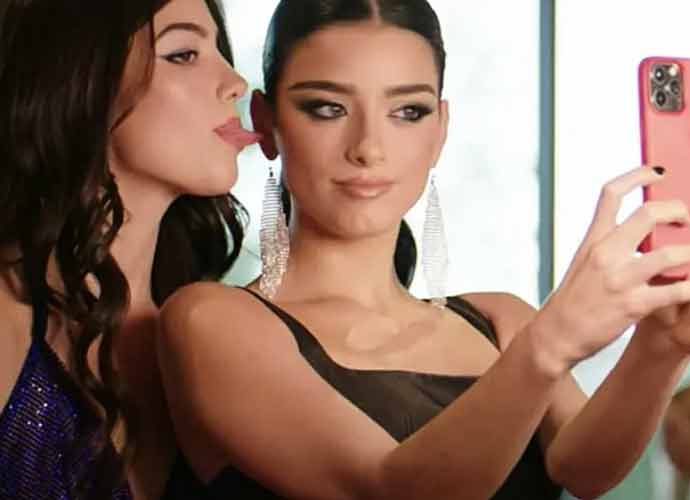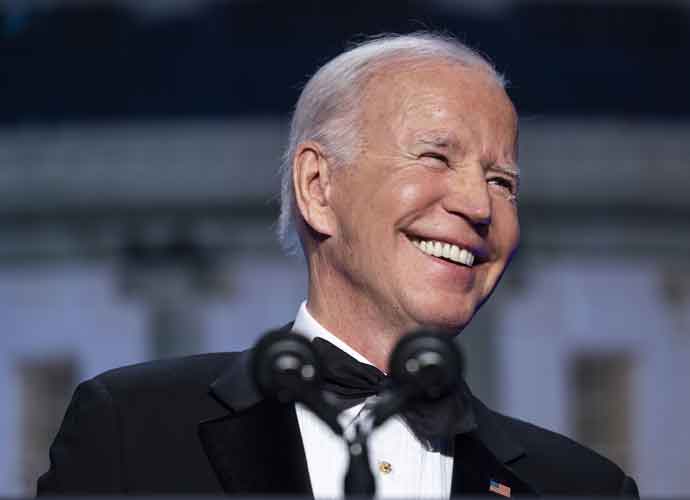‘The D’Amelio Show’ Review: When TikTok Fame Comes First, Talent Must Play Catch Up

2.5/5
Charli D’Amelio is a 17-year-old from Connecticut who loves dance competitions, her self-proclaimed “basic” style, and the four D’Amelio family dogs. She’s also the teenager who skyrocketed to an unprecedented kind of fame as a sort-of dance-savvy mascot for TikTok, the megalith Chinese app that needed an unassuming poster girl to prove to skeptical Americans (and the world at large) that they should be trusted on their phone screens.
The Hulu reality TV program The D’Amelio Show, which premiered on September 3, is an eight-episode, surprisingly bleak look into the life of an adolescent girl and her mother Heidi, father Marc and sister Dixie as they struggle to understand why they became so deafeningly famous and how they can each capitalize on their sudden abundance of financial opportunities that could disappear in the blink of a TikTok.
The D’Amelio Show uses plenty of vertical clips from Charli’s TikTok videos to seemingly show the casual Hulu consumer exactly how she is watched by the (heavily pre-teen) masses. Peppered in between her TikToks are home videos of Charli performing at the dance competitions she participated in before her rise to fame. The show initially chronicles Charli’s foray back into non-TikTok (full-body) dancing, but unlike her experience in the suburbs of Connecticut, she now has the opportunity to work with Blake McGrath, a choreographer to the stars and well-known dancer in his own right.
It is clear that D’Amelio is a gifted and technically sound dancer, yet she recognizes that the TikTok dancing she does is primarily made up of movements from the waist up. Charli’s realization brings her closer to the reality that the often unremarkable viral dances she performs on Tiktok are only a piece of why she got famous. Hundreds of millions of people replicate the viral dances that TikTok doles out, but what makes Charli so powerfully different from the masses? Quite frankly, absolutely nothing. And this is her superpower – being on the prettier side of average and perfectly executing each micro-movement on-screen seems to make viewers’ neurochemicals emit feelings of pleasant amusement. Charli is slender, with brown hair and puppy dog eyes, and looks like the type of girl you might’ve known through a youth soccer league. It almost seems as if TikTok utilized Charli to bring awareness to the apps’ capability to make truly anyone famous, even someone as seemingly standard-issue as her.
Charli’s 20-year-old sister Dixie is very transparent about the fact that she only rose to fame through relation to her sister, and she admits that she is heavily leveraging Charli’s influence to boost her own. It is refreshing to see such apparent acknowledgment of nepotism, but Dixie’s use of it is so clear-cut, if she denied it, it would be both embarrassingly fake. Dixie has chosen to make her mark by pursuing her vague childhood dream of becoming a singer. Despite showing no real passion for the craft, Dixie is presented with a host of Los Angeles music industry legends to try to whip her throaty singing voice into marketable shape. One of these figures is Stevie Mackey, a vocal coach for celebrities like Jennifer Lopez, Lenny Kravitz and Kelly Rowland, who enthusiastically drags Dixie through a cover of Olivia Rodrigo‘s “Driver’s License.” Another is LA Reid, a record executive and former host of The X Factor, that gave Dixie empty encouragement before the release of her forgettable new song. Encouragement is truly not necessary when no matter how unremarkable you are, your sheer existence is profitable enough that your aspirations will be actualized at any cost (even if that cost is a bizarre Wiz Khalifa feature in Dixie’s song “One Whole Day”).
The other D’Amelio players, parents Marc and Heidi, serve the dual purposes of reeling their daughters into an overwhelming number of profitable endeavors and wiping their tears away when the public exposure becomes too much. In a telling scene that takes place during a family marketing meeting, a barrage of binders, each with a future career move for Charli (brand partnerships, clothing companies), are strewn over the floor, which prompts Heidi to ask “where is the binder where she gets to be a kid”? It’s apparent that this sentiment is facetious, as it is likely that Heidi sees her daughters’ identity as a “child” only second to that of “primary breadwinner.”
In a later scene, Marc and Heidi sit with Dixie as she bawls from the copious online hate she received after releasing a video with Vogue. Their comforts are similar enough to a parent reassuring their child after being bullied at school, but in this case, the bullies are a major part of the family income. Dixie’s struggle with anxiety and depression is not to be overlooked, and neither is the reality that she is being encouraged to write cash-grab pop anthems about her mental health (i.e. Be Happy) instead of seeking therapy or medication.
The conclusion of the series’ first episode is an odd and abrupt message on a black screen that provides mental health resources for viewers. The message itself isn’t bad per se, but given that the tone of the show was presented as almost Kardashian-esque, it jerks the show in a brief grim direction that doesn’t ever fully explain itself. The D’Amelio Show exists in a strange grey area that both highlights the opportunities that internet fame will present, and condemns the often unsavory outcomes of that fame without ever thinking to step away from it. But Marc clearly states that no matter how much of his family’s emotional dirty laundry is aired out, his primary goal “is to tell the true story of us.” Unfortunately, with reality TV and the Internet, the murkiness that aligns itself with “truth” isn’t the most palatable. Certainly not as palatable as a trendy, visually satisfying 60-second TikTok.
RELATED ARTICLES
Get the most-revealing celebrity conversations with the uInterview podcast!








Leave a comment